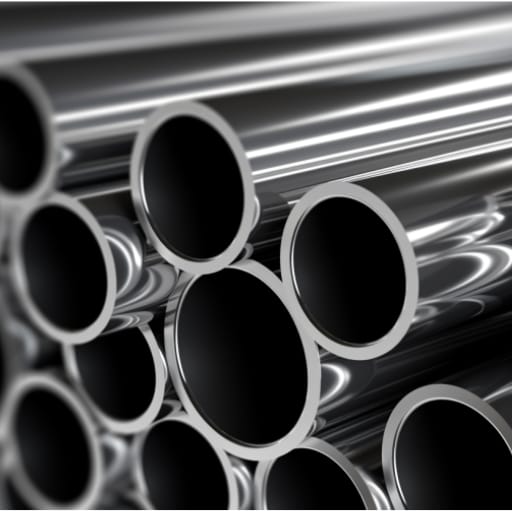When it comes to A2 tool steel and other alloy steels, both offer high performance but differ in key areas such as hardness, toughness, and wear resistance. For industries relying on durable materials, knowing these differences can impact both production efficiency and product lifespan. Partnering with quality tool steel suppliers ensures access to the right material for specific needs, making informed choices essential.
1. Understanding the Basics: What is A2 Tool Steel?
A2 tool steel is an air-hardening steel recognized for its excellent toughness and wear resistance. Classified as a member of the cold work steel family, A2 tool steel is alloyed with carbon, chromium, molybdenum, and vanadium, which contributes to its durability and resistance to abrasion. The balance of alloying elements in A2 results in a structure that retains hardness even after extensive use. When sourced from reputable tool steel suppliers, A2 tool steel is widely utilized for tools, dies, and components requiring high stability and wear resistance.
2. Alloy Steels: Versatile and Customizable Options
Alloy steels are a broad category of steels that are alloyed with various elements, such as nickel, manganese, and tungsten, to enhance specific properties. Unlike A2 tool steel, alloy steels are often highly customizable based on the composition of alloying elements, which means their properties can vary greatly. Tool steel suppliers typically offer various types of alloy steels to cater to needs ranging from strength and hardness to resistance to impact and wear. Common applications for alloy steels include structural components, automotive parts, and machinery.
3. Key Differences in Hardness: A2 Tool Steel vs. Alloy Steels
When comparing A2 tool steel to many alloy steels, A2 stands out for its superior hardness. Due to its air-hardening nature and carbon-chromium composition, A2 tool steel achieves high levels of hardness, making it resistant to wear and suitable for tools that withstand repeated impact. However, some alloy steels can achieve comparable hardness levels, depending on their specific alloying elements and heat treatment process. Tool steel suppliers often recommend A2 tool steel for applications where consistent hardness is critical, while alloy steels can be tailored to offer a balance between hardness and other properties.
4. Toughness and Durability in A2 Tool Steel
Toughness is a key consideration when selecting steel, as it impacts the material’s ability to resist cracking under stress. A2 tool steel is known for its impressive toughness, which allows it to absorb shock without fracturing. This makes A2 ideal for tools that experience heavy use and impact, such as punches, dies, and shear blades. However, certain types of alloy steels can also provide high levels of toughness and may be more resilient in environments requiring extreme ductility or resistance to heavy loads. Choosing the appropriate material from reliable tool steel suppliers ensures the resilience required in applications where both toughness and durability are essential.
5. Wear Resistance: A2 Tool Steel’s Advantage
One of A2 tool steel’s most desirable characteristics is its wear resistance, which is vital for tools exposed to repeated contact and friction. This wear resistance is due to the steel’s high chromium content, which helps prevent surface degradation. Alloy steels can vary in wear resistance; while some alloy steels with high hardness can resist wear effectively, they may lack the same level of abrasion resistance provided by A2 tool steel. For applications such as cutting and forming, A2 tool steel offers reliable performance that keeps tools functioning longer without frequent replacement.
6. Machinability of A2 Tool Steel vs. Alloy Steels
Machinability refers to how easily a material can be cut, shaped, and finished. A2 tool steel, although hard, offers good machinability relative to other high-hardness steels. Tool steel suppliers recommend A2 for applications that require precision machining because it maintains its shape well, even during detailed work. Alloy steels, however, have a broader range of machinability based on their composition. Certain alloy steels are specifically designed for easy machining, making them suitable for complex components that require rapid and accurate shaping.
7. Heat Treatment and Stability: How A2 Tool Steel Compares
Heat treatment is critical in enhancing the resilience of tool steels. A2 tool steel undergoes a relatively straightforward heat treatment process that involves air hardening, making it easier to manage during production compared to some alloy steels that require oil or water quenching. A2 tool steel is also less prone to distortion during heat treatment, which maintains dimensional stability—an advantage for precision tooling. Conversely, some alloy steels may exhibit warping or expansion during heat treatment, so consulting with expert tool steel suppliers is essential for applications with tight tolerance requirements.
8. Corrosion Resistance in A2 Tool Steel vs. Alloy Steels
While A2 tool steel is highly resistant to wear and maintains stability, it is not particularly resistant to corrosion. For applications in environments exposed to moisture or chemicals, alloy steels with high chromium or stainless content offer superior corrosion resistance. Tool steel suppliers often suggest alloy steels for applications where exposure to corrosive elements is likely, while A2 tool steel remains a top choice for dry or controlled environments where hardness and wear resistance are priorities.
9. Price and Cost-Effectiveness: A2 Tool Steel vs. Alloy Steels
Cost is a factor in any material selection, and both A2 tool steel and alloy steels vary widely in price depending on the specific grade and treatment. A2 tool steel is generally cost-effective for high-wear, high-stress applications, as its durability reduces the need for frequent replacement. Certain alloy steels, especially those with customized alloying elements for enhanced properties, may be more expensive upfront but could be a worthwhile investment for specific uses requiring corrosion resistance or high ductility. Working with knowledgeable tool steel suppliers helps manufacturers determine the best cost-to-performance ratio based on their application requirements.
10. Applications and Recommendations: When to Choose A2 Tool Steel or Alloy Steels
The choice between A2 tool steel and alloy steels depends largely on the application. A2 tool steel is ideal for heavy-duty tools, dies, and molds that require high hardness and wear resistance. Industries that rely on cutting tools, stamping dies, and precision machining typically prefer A2 tool steel for its consistent performance and toughness. Alloy steels, on the other hand, offer versatility for applications requiring specific combinations of strength, ductility, or corrosion resistance, such as automotive components, construction materials, and equipment exposed to harsh conditions.
Consulting with Tool Steel Suppliers
Tool steel suppliers play a key role in helping manufacturers select materials tailored to specific needs. Experienced suppliers understand the properties of A2 tool steel and various alloy steels, allowing them to recommend materials that balance resilience, cost, and performance. By consulting with suppliers, manufacturers gain access to technical expertise and reliable products that meet the demands of their applications.
Conclusion: Which is More Resilient—A2 Tool Steel or Alloy Steels?
In terms of resilience, A2 tool steel and alloy steels each excel in different areas. A2 tool steel offers unmatched wear resistance and toughness, making it suitable for tooling applications that demand high performance under stress. Its air-hardening property and dimensional stability during heat treatment further enhance its suitability for precise tools. Alloy steels, however, provide adaptability and can be engineered for specific needs such as corrosion resistance or impact strength, which are essential in environments with unique challenges.
Ultimately, the decision to use A2 tool steel or an alloy steel depends on the specific requirements of the application. Industries in need of durable, long-lasting tools frequently turn to A2 tool steel, while applications that require flexibility and customized properties may benefit more from alloy steels. Partnering with trusted tool steel suppliers ensures access to materials that meet rigorous performance standards, allowing manufacturers to achieve reliable and efficient results in their respective fields.











